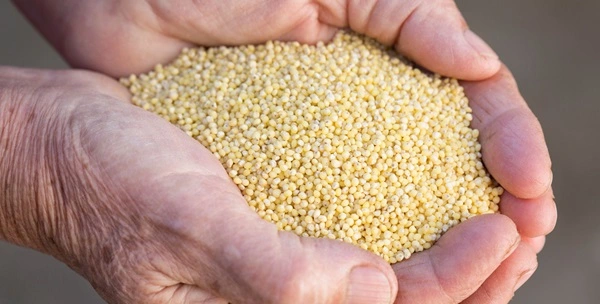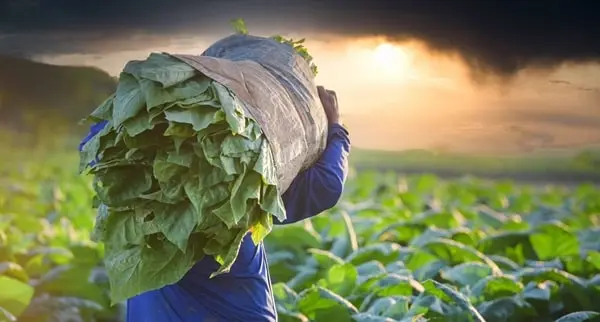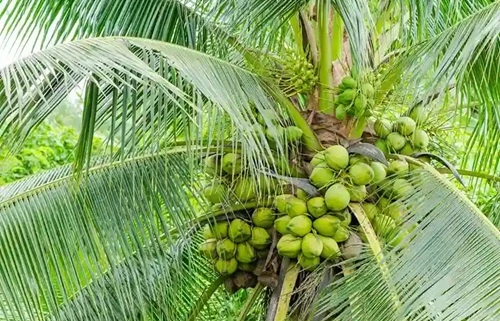Millet is a widely consumed grain in Asia and Africa, with approximately 1.2 billion people incorporating it into their diets. It is a stable food, with India being the largest consumer, followed by Niger and China. India contributes 30.9 million tonnes to the overall production of Millet across the globe. Millet is highly nutritious and a crucial part of the diet in many developing countries. Millet is becoming increasingly popular in India due to its failure-resistant characteristics and government incentives.
Let us know about the top 5 highest millet-producing in India:

1. Rajasthan
Rajasthan has India’s largest share of millet products, accounting for 27 percent of the nation’s total production. Despite the thirsty climate, the state’s growers are flexible and cultivate a different range of millets, especially Bajra and Pearl Millet. Rajasthan’s commitment to millet production is apparent from the Thar Desert’s vast fields to the Mewar’s rich plains. This fidelity ensures a harmonious force of nutritional and sustainable crops, earning Rajasthan the title of the Millet Master of India, which is well-justified.
2. Karnataka
Karnataka is the second most millets growing states in India that contributes 18 percent to the overall millet production across India. In Karnataka, a brand for millets called Siridhanya has been made. It produces ragi (cutlet millet), Navane (foxtail millet), same (little Millet), and Haruka (Kodo millet). The millets are also important in the state’s local cuisine. Some states where Millet is grown in Karnataka are Koppal, Raichur, and Bellary. The government of Karnataka is supporting the farmers in the growth of the Millet.
3. Maharashtra
Maharastra contributes 14 percent to the overall millet production across India. In Maharashtra, various millets are available, including cutlet millets, also known as Nachani in Marathi, and plum millets, used to make bhakri, among the most popular. Some of the areas popular for millet production in Maharashtra are Sangli, Yavatmal, and Jalgaon. Government initiatives like RKVY help farmers in millet farming. Millets are one of the oldest food sources known for easy consumption. They’re small-seeded hardy crops that grow well in dry or rain-fed areas under borderline soil fertility and humidity conditions. These crops are primarily cultivated in low-rich land, ethnic and rain-fed, and mountainous regions across the state.
4. Uttar Pradesh
Uttar Pradesh contributes 12 percent to the overall millet production across India and promotes the production of millet in the state. Presently, the major grains produced in the state are rice, wheat, sludge, and different types of Millet. Millets can grow in poor climatic or soil conditions and provide nutritional grain and fodder. Pearl millet and Sorghum are the most popular Millet found in Uttar Pradesh. These millets can easily be grown in areas with low moisture temperature
5. Madhya Pradesh
Madhya Pradesh contributes 6 percent to India’s overall millet production. It is located in the country’s center and receives ample rain, suitable for millet cultivation. The leading millet-cultivating regions in Madhya Pradesh are Dindori, Mandla, Umaria, Shahdol, Betul, and Chhindwara. Local people of the state consume Millet in their daily diet.
To conclude, here is the list of the top five millet-producing states of the nation. These states supply the country’s local and international demand. The government of India started various schemes that are helpful for the farmers and promote millet production effectively. Millet is important in producing a flexible and nourished future for India.
FAQs
1. Which millet kinds are grown in different states
Ans: Each state cultivates a variety of millets, including Ragi, Jowar, and Bajra. Bajra is the dominant crop in Rajasthan due to its resistance to dry conditions.
2. How do states support millet growers?
Ans: States offer seed subsidies, training programs, and financial support for millet growers. Research institutions unite with growers to develop high-yielding and climate-flexible millet varieties. Mindfulness nutritionists educate growers and consumers about Millet’s nutritional and environmental benefits.
3. What part does Millet play in the diet and culture of india?
Ans: Like ragi, bajra, and jowar, millets are integral to traditional cuisine in certain states due to their nutritional value. These grains are largely valued, especially in regions with high malnutrition rates.
4. Are there government Initiatives promoting millet civilization?
Ans: State and public governments have launched initiatives similar to subventions, procurement programs, and R&D to promote millet civilization.
5. How do these contribute to millet production in India?
Ans: India’s food security and agricultural diversity are enhanced significantly by the millet products of these countries.

